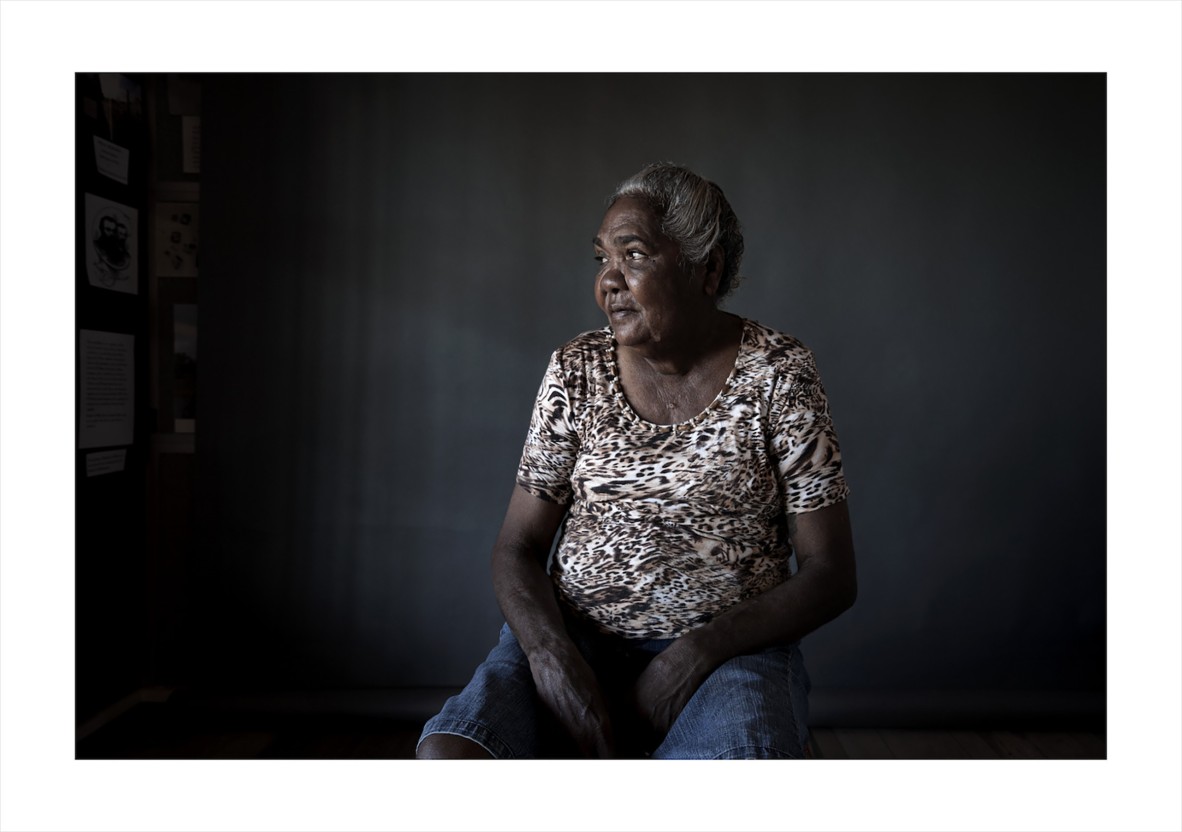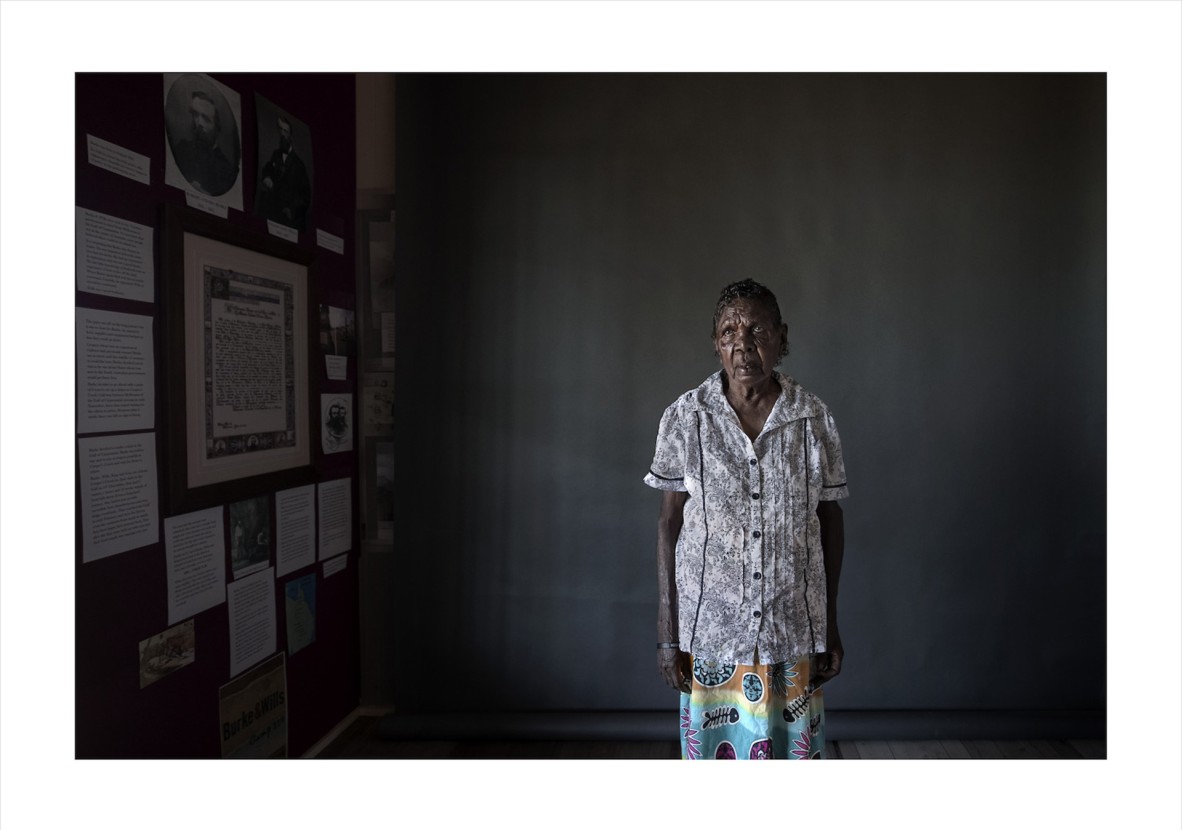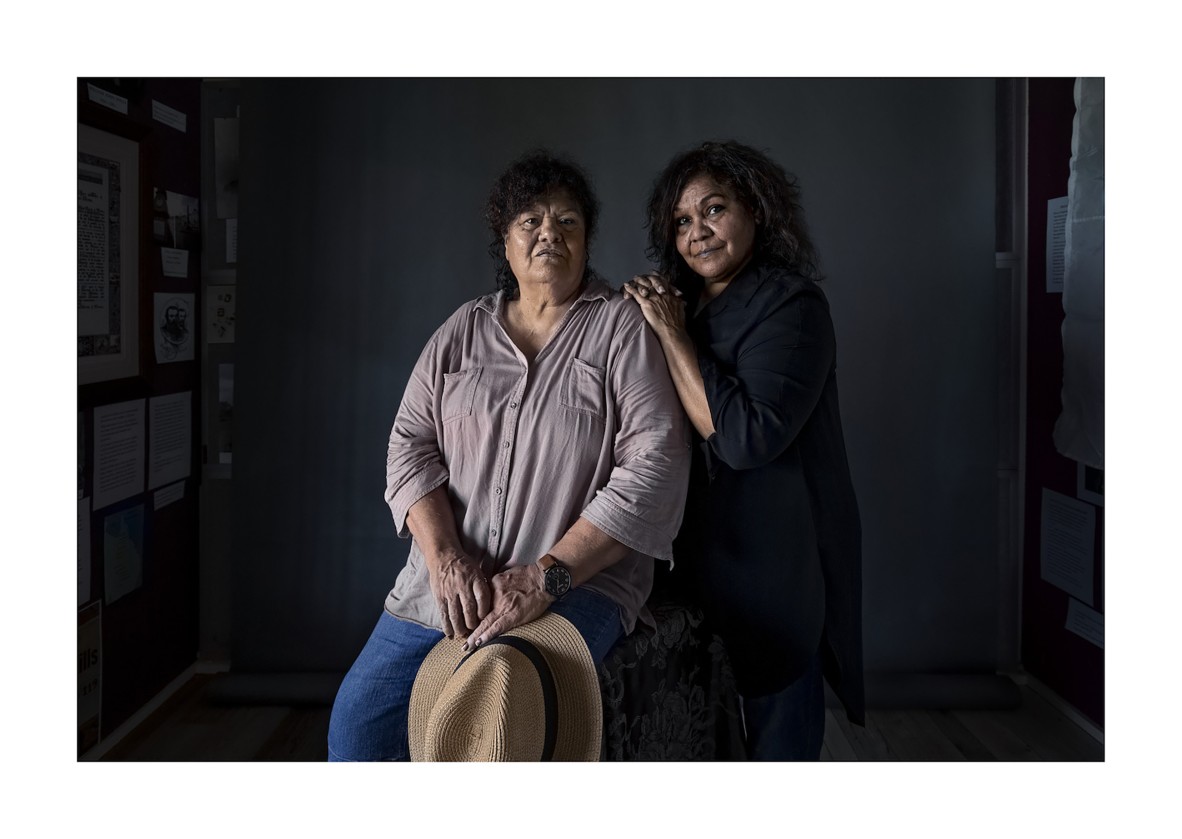Aboriginal stockwomen: the hidden figures of Australia’s pastoral industry
By Janine Lucas | 26 February 2024

Merna Beasley, Kurtijar woman, 2021, David Prichard, First Nations Women Stock Workers portraits, State Library of Queensland. Image 33834-0001-0007.
The hardy station hand rounding up a mob of cattle or riding the boundaries of a vast outback property is an Aboriginal woman, in a little-told story of Australia’s colonial history.
Accomplished horsewomen with an innate connection to the land, many Aboriginal women in the late 1800s and early 1900s masqueraded as male riders to evade laws that banned them from stock work, says Serene Fernando, Curator, Truth Telling, at State Library of Queensland.
‘They had to hide their ability to ride horses, even to the point where they would bind their chest, cut their hair short and disguise themselves as men and boys just to work outside those gender-specific roles,’ Serene says.
Serene, a Gamilaraay woman of north-west New South Wales, is the curator of Working Country, a State Library showcase recognising Aboriginal stockmen and stockwomen for their role in building Queensland’s cattle industry infrastructure.

Serene Fernando, Curator, Truth Telling, at State Library of Queensland, is curator of Working Country. Photo by Leif Ekstrom.
‘Dignified, strong and beautiful portraits’
Working Country includes 4 striking portraits of Aboriginal stockwomen who have spent most of their working lives on cattle stations in Far North Queensland.
The State Library collection images are part of the Tribute to Indigenous Stock Women series by Australian photographer David Prichard. The series won the 2021 Taylor Wessing Photo Portrait Prize, awarded by the UK’s National Portrait Gallery.
‘I wanted to produce portraits that were dignified, strong and beautiful, and worthy to represent these women today and into the future,’ David said in his entry.
The judges said the photographer had created a space for the proud and respectful representation of each of the sitters and their personal histories in the naturally lit portraits.
Both David and Serene were inspired by the work of Koa woman Dr Tauri Simone in bringing the legacy of her fellow Aboriginal stockwomen to the fore through her PhD thesis, which revealed the unacknowledged extent of First Nations women’s contribution to early pastoral development across Queensland, Northern Territory and north-western Australia.
For Serene, a researcher and educator who has led projects at the National Museum of Australia, Working Country was a chance to tell the forgotten or ignored history of Aboriginal stock workers – both men and women – from a First Nations perspective.
‘First Nations peoples worked in indentured servitude to the government under the Aboriginals Protection and Restriction of the Sale of Opium Act,’ she says.
‘Their labour generated wealth in the pastoral industry, yet many Aboriginal station workers received little to no pay or were offered only rations and shelter in return for their hard work. The government garnished their wages, and authorities stole or mishandled their wages under laws that entrenched generational poverty for Aboriginal people.’
Working Country examines wage theft, the long fight for civil rights and equal pay, how First Nations stock workers’ knowledge of the ancient Dreaming Tracks shaped the network of stock routes, and the modern traditions of Aboriginal-run rodeos and Aboriginal-owned cattle properties.

Shirley Mary Ann McPherson, Kurtijar woman, 2021, David Prichard, First Nations Women Stock Workers portraits, State Library of Queensland. Image 33834-0001-0009.
The Normanton photo shoot
Each dry season for the past decade, David has loaded a portable studio into his old LandCruiser and set out on the days-long drive from NSW to remote towns across northern Australia.
His passion project, photographing First Nations rodeo riders for what he hopes will eventually be a book, landed him in Normanton between rodeos and led to a permanent photo display commissioned by Carpentaria Shire Council.
The council got back in contact a couple of years later with another commission, this time to address the lack of recognition for the region’s Aboriginal stockwomen. David worked closely with First Nations community representatives, who put forward sitters for the project.
With its tall ceilings, big windows and beautiful natural light, the Normanton Library and Visitor Information Centre in the town’s heritage-listed Burns Philp Building was the perfect location for the March 2021 photo shoot.
The 1884 warehouse is the earliest surviving store of the northern mercantile giant, which owned ships involved in ‘blackbirding’ – luring or kidnapping Pacific Islanders to work as indentured labourers on Queensland sugarcane farms.
‘There we are in the Burns Philp Building, photographing Indigenous stockwomen, and the walls surrounding them are covered in portraits of white colonial men with long beards,’ David says. ‘The irony was not lost on me. In some of the photographs I did include the walls with the old portraits.’

Portrait of Gloria Campbell, Kurtijar woman, 2021, David Prichard, First Nations Women Stock Workers portraits, State Library of Queensland. Image 33834-0001-0008.
The women, of Gkuthaarn, Kukatj and Kurtijar ancestry, spoke of working long days on cattle stations from a young age.
Kurtijar woman Merna Beasley started station work at age 15, cleaning and doing the daily laundry. After meeting her husband, Rolly, she worked alongside him on jobs such as fencing, building yards, operating and fixing graders, and pulling cattle from bogs.
She worked on Gilbert River Farm, Lilyvale, Dunbar, Jessievale, Kulata, Inkerman, Magoura, Milgarra, Hereford, Miranda, Gum Creek and Delta Downs. ‘I liked working on stations because I was out bush and doing different jobs that taught me a lot of useful skills.’
Her clearest memory of station work, though, is stumbling upon callously discarded news of a family tragedy: ‘When I was out bush working, my aunty passed away in town and my family sent me a telegram to the station to tell me she died and when her funeral was, but I didn’t get the message because the manager threw it in the bin and I found it there a few days later.’

Portrait of sisters Marlene Logan and Cathy Snow, Gkuthaarn women, 2021, David Prichard, First Nations Women Stock Workers portraits, State Library of Queensland. Image 33834-0001-0010.
Worldwide exposure
For a time, news coverage of one of the world’s most coveted photography prizes turned the international spotlight on Australia’s unsung Aboriginal stockwomen and the history of injustice against First Nations station workers.
‘The concept for the project was to recognise the women for their work over the years in the cattle industry,’ David says. ‘That recognition then became front and centre for a couple of weeks internationally because there were articles in most of the major newspapers.
‘That was, for me, the best part of it: We'd set out to recognise the women, thinking it was just going to be a display in the Burns Philp Building in Normanton, and it became this bigger thing.’
This year, State Library will film digital stories to preserve the women’s experiences in the Queensland heritage collection alongside their remarkable portraits.
Working Country is at State Library until 14 May in kuril dhagun on level 1.
Book a free guided tour with curator Serene Fernando.
Explore the Tribute to Indigenous Stock Women series in our catalogue.
Comments
Your email address will not be published.
We welcome relevant, respectful comments.